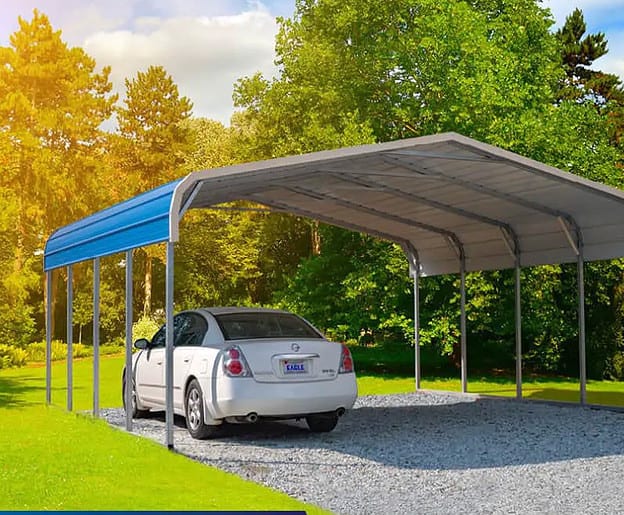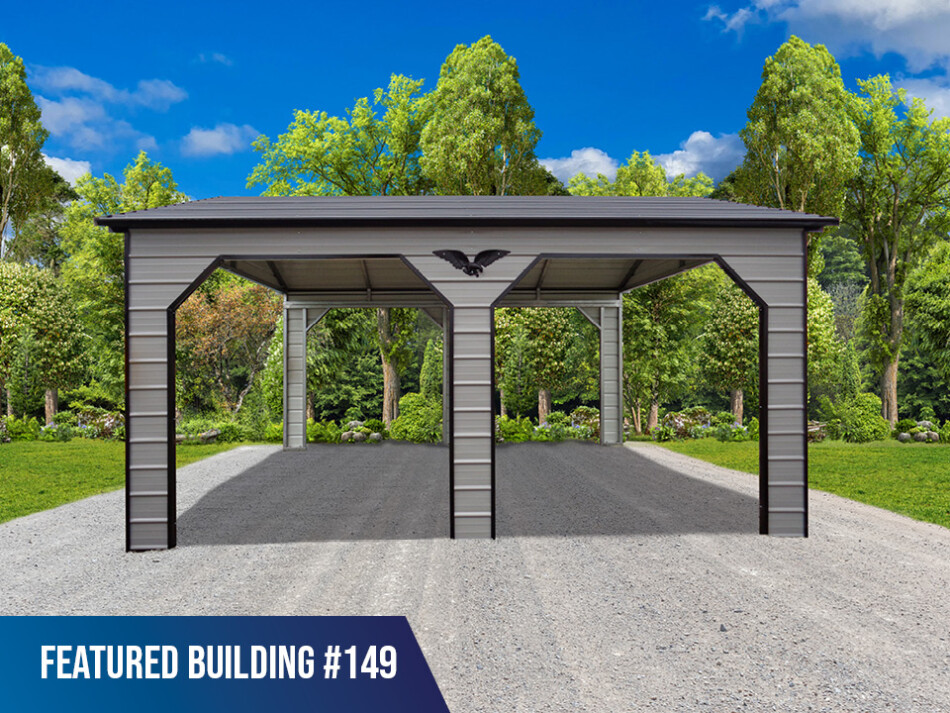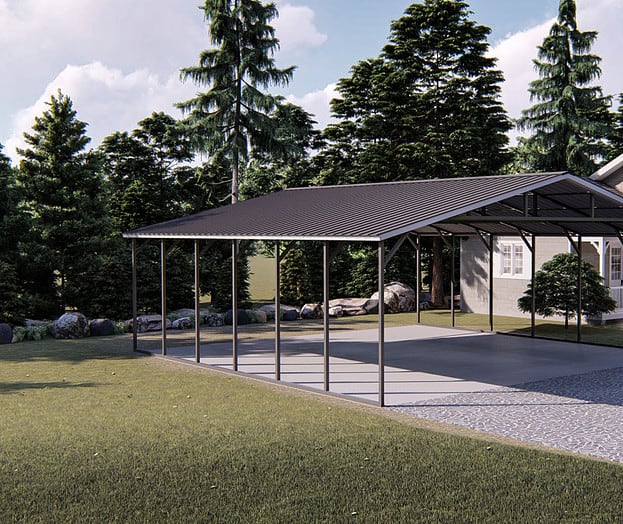Looking for comprehensive information on carports? You’ve come to the right place. Our in-depth guide will provide you with all the answers you need regarding the benefits, functionality, and various uses of carports, ensuring you make informed decisions for your vehicle protection and outdoor space enhancement.
Introduction to Carport
When it comes to providing protection for your vehicles and enhancing your outdoor space, carports are a versatile and practical solution. Carports offer a range of benefits, making them a popular choice among homeowners and businesses alike. Let’s explore what carports are, the advantages they offer, and some common uses for them.
What are Carports?
Carports are covered structures designed to provide shelter for vehicles, typically cars, motorcycles, boats, or RVs. Unlike garages, carports are open-sided or partially enclosed, offering protection from the elements while allowing for easy access. Carports can be freestanding or attached to existing structures such as houses or commercial buildings.
The Benefits of Carports
Carports offer several advantages over traditional garages. They provide protection against harsh weather conditions, including rain, snow, hail, and excessive sunlight. Carports can also help preserve the aesthetic appeal of vehicles by shielding them from fading, rust, and other environmental damage. Moreover, carports can serve as versatile outdoor spaces for various activities.

Popular Uses of Carports
Carports have diverse applications beyond vehicle storage. They can be utilized as outdoor entertainment areas, workshop spaces, or even as shaded play areas for children. Additionally, carports can be used to cover and protect other valuable items like garden equipment, patio furniture, or recreational vehicles. Their flexibility and functionality make carports a valuable addition to any property.
Structural Design Considerations
Designing a carport involves careful consideration of various structural elements to ensure its stability, functionality, and aesthetic appeal. Let’s delve into three key aspects of carport design: size and dimensions, roofing materials and styles, and supporting posts and anchoring methods.
Size and Dimensions
Determining the appropriate size and dimensions for your carport is crucial for accommodating your vehicles and providing adequate space. Consider the number and size of vehicles you plan to shelter, as well as any additional storage needs. Measure the available area on your property to determine the maximum size of the carport. It’s essential to adhere to local building codes and regulations to ensure compliance.
Roofing Materials and Styles
The choice of roofing materials and styles significantly impacts the functionality and aesthetics of your carport. Common roofing materials for carports include metal, polycarbonate panels, and shingles. Each material offers different advantages in terms of durability, weather resistance, and cost-effectiveness. Additionally, consider the roof style, such as gable, flat, or curved, based on your preferences and architectural compatibility.

Supporting Posts and Anchoring Methods
The supporting posts and anchoring methods of a carport provide the structural stability necessary to withstand various weather conditions. The number and placement of supporting posts depend on the size and design of the carport. Common options include metal or wooden posts, which should be securely anchored to the ground or attached to existing structures. Proper anchoring methods, such as concrete footings or ground anchors, ensure the carport remains stable and safe.
Weather Protection Features
One of the primary purposes of a carport is to shield your vehicles from the elements. Incorporating effective weather protection features ensures that your carport provides optimal protection against rain, sunlight, snow, and strong winds. Let’s explore three essential weather protection features for carports: rainwater management systems, UV protection and sunlight filtering, and snow load and wind resistance.
Rainwater Management Systems
To prevent water accumulation and potential damage, a well-designed rainwater management system is crucial for a carport. This system should include features such as gutters, downspouts, and drainage channels to efficiently divert rainwater away from the carport structure and surrounding areas. Adequate slope and positioning of the gutters and downspouts are essential for effective water flow and drainage.
UV Protection and Sunlight Filtering
Excessive exposure to sunlight can cause fading and damage to your vehicles’ paint, interiors, and other components. Incorporating UV protection and sunlight filtering features into your carport design helps mitigate these risks. Consider options such as UV-resistant roofing materials, shade cloths, or translucent panels that allow natural light while reducing harmful UV radiation.
Snow Load and Wind Resistance
In regions prone to heavy snowfall or strong winds, it’s crucial to ensure that your carport can withstand these weather conditions. Consider the design load capacity for snow and wind when selecting materials and structural components. Reinforced roofing materials, sturdy supporting posts, and proper anchoring methods are essential for maintaining the carport’s integrity and preventing structural damage.
Functionality and Convenience Features
In addition to providing protection for your vehicles, carports can offer a range of functional and convenient features that enhance their usability. Let’s explore three key aspects: integrated storage solutions, lighting and electrical outlets, and customization options.

Integrated Storage Solutions
To maximize the utility of your carport, incorporating integrated storage solutions can help you organize and store various items conveniently. Consider options such as built-in shelving units, cabinets, or hooks for hanging tools, sports equipment, or gardening supplies. Efficient storage within the carport allows for easy access to frequently used items while keeping the space clutter-free.
Lighting and Electrical Outlets
Having proper lighting in your carport ensures visibility during nighttime use and enhances security. Consider installing overhead lights, motion sensor lights, or LED strips to illuminate the area effectively. Additionally, incorporating electrical outlets allows you to power tools, charge electric vehicles, or use electrical devices conveniently within the carport.
Customization Options
Carports can be customized to align with your personal preferences and architectural style. Explore customization options such as color choices, decorative trims, or lattice work that complements the design of your property. Customization allows you to create a visually appealing carport that seamlessly integrates with your home or commercial building.
Durability and Maintenance
Ensuring the durability and ease of maintenance of your carport is essential for its long-term functionality and aesthetics. Consider the following aspects when designing and maintaining your carport: material selection and longevity, resistance to corrosion and rust, and easy cleaning and maintenance tips.
Material Selection and Longevity
Choosing the right materials for your carport plays a vital role in its durability and longevity. Opt for high-quality materials that are known for their durability, such as galvanized steel, aluminum, or treated wood. These materials offer excellent resistance to weathering, cracking, and warping, ensuring that your carport can withstand the test of time.
Resistance to Corrosion and Rust
Since carports are exposed to various weather conditions, selecting materials that are resistant to corrosion and rust is crucial. Look for materials that have protective coatings or are naturally resistant to rust, such as stainless steel or aluminum. Regular inspection and maintenance can help identify any signs of corrosion or rust and allow for timely repairs.
Easy Cleaning and Maintenance Tips
Maintaining a clean and well-maintained carport not only enhances its appearance but also prolongs its lifespan. Regularly remove debris, leaves, and dirt from the roof and gutters to prevent clogging and water damage. Clean the carport structure and surfaces using mild soap or detergent and water. Avoid using abrasive cleaners that can damage the materials. Additionally, inspect the carport periodically for any signs of damage, such as loose screws or bolts, and address them promptly.
Conclusion
In conclusion, incorporating these must-have features for carports can ensure that your vehicle storage solution is functional, durable, and aesthetically pleasing. From structural design considerations to weather protection features, functionality, and convenience, and durability and maintenance aspects, each element contributes to creating an optimal carport experience tailored to your needs.


